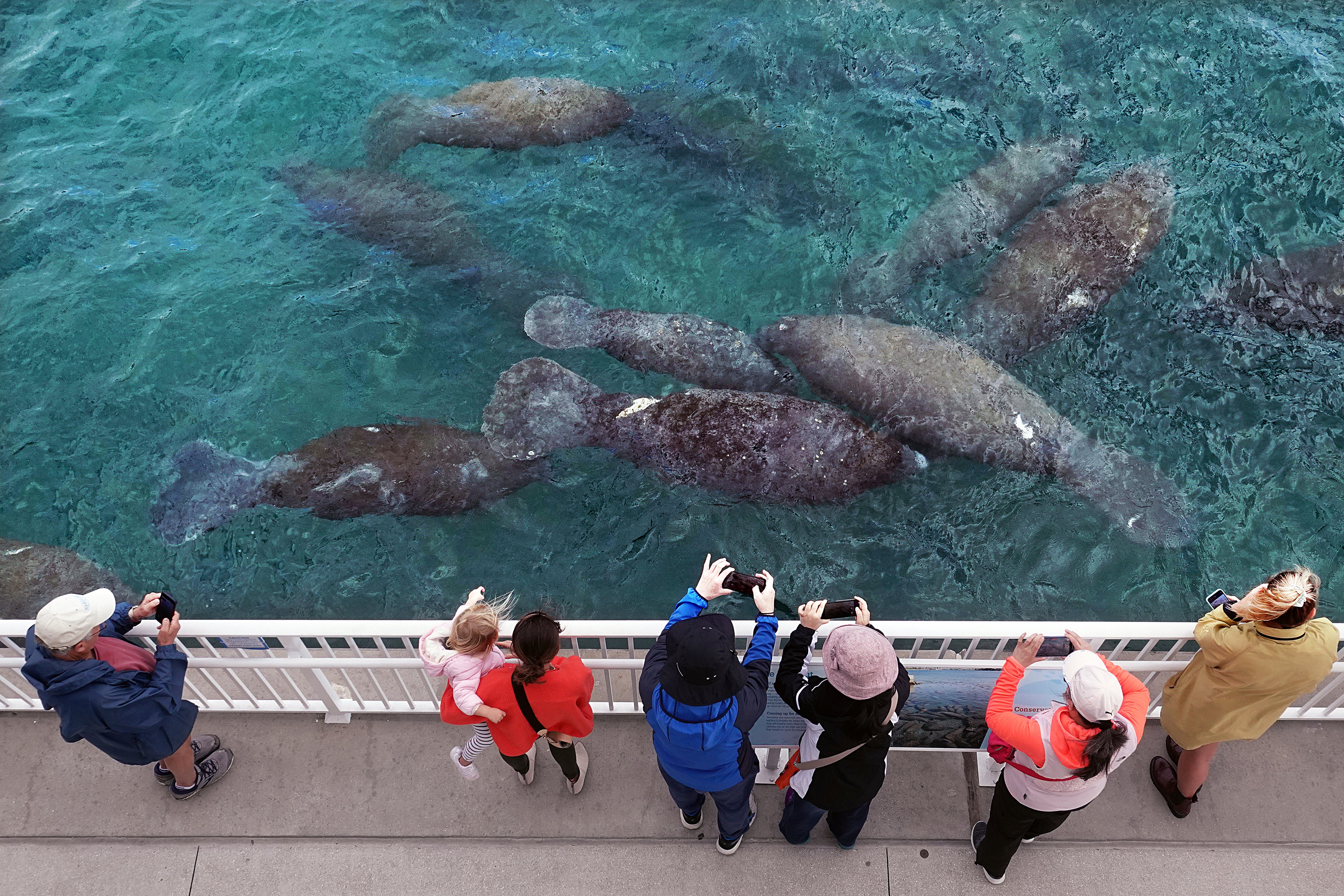Officials: Florida manatees eating lettuce in pilot program
Manatees at risk of starvation because native seagrass is dying due to water pollution have begun eating lettuce under an experimental feeding program

Your support helps us to tell the story
From reproductive rights to climate change to Big Tech, The Independent is on the ground when the story is developing. Whether it's investigating the financials of Elon Musk's pro-Trump PAC or producing our latest documentary, 'The A Word', which shines a light on the American women fighting for reproductive rights, we know how important it is to parse out the facts from the messaging.
At such a critical moment in US history, we need reporters on the ground. Your donation allows us to keep sending journalists to speak to both sides of the story.
The Independent is trusted by Americans across the entire political spectrum. And unlike many other quality news outlets, we choose not to lock Americans out of our reporting and analysis with paywalls. We believe quality journalism should be available to everyone, paid for by those who can afford it.
Your support makes all the difference.Manatees at risk of starvation because native seagrass is dying due to water pollution have for the first time started eating lettuce under an experimental feeding program, Florida wildlife officials said Friday.
The test facility on the east coast's Indian River Lagoon had its first takers of romaine lettuce Thursday, leading more manatees to join in, said Ron Mezich, chief of the effort’s provisioning branch at the Florida Fish and Wildlife Conservation Commission.
“We think it's significant,” Mezich said in a remote news conference. “When the animals are there, we will continue to offer food and hope they take advantage of that.”
The program is adding cabbage and a second type of lettuce to entice the manatees, also known as sea cows. All of these are common foods given to manatees at rehabilitation facilities.
The unprecedented feeding program is a state and federal response to last year's record number of 1,101 documented manatee deaths. Many are starving to death because pollution from agricultural, urban and other sources has triggered algae blooms that have decimated seagrass beds on which manatees depend — especially during cold winter months.
About 25 to 35 manatees were seen Friday near the feeding site at a Florida Power & Light plant that discharges warm water the animals favor when water temperatures cool. Several hundred were spotted from the air in nearby areas, said Tom Reinert, south regional director for the FWC.
There are no immediate plans to expand the feeding program beyond Brevard County, officials said. It remains illegal for people to feed wild manatees on their own.
“This is a pilot program and we're trying to learn as much as we can,” Reinert said. But he added that seagrass restoration and a reduction in water pollution are the long-term answers to the starvation problem.
“We need a healthy lagoon to support the seagrass,” he said. “We can't feed all of them.”
In addition to the feeding experiment, officials are working with a number of facilities to rehabilitate distressed manatees that are found alive. These include Florida zoos, the SeaWorld theme park and marine aquariums. There were 159 rescued manatees in 2021, some of which require lengthy care and some that have been returned to the wild, officials said.
There are about 7,520 wild manatees in Florida waters currently, according to state statistics. The slow-moving, round-tailed mammals have rebounded enough to list them as a threatened species rather than endangered, although a push is on to restore the endangered tag given the starvation deaths.